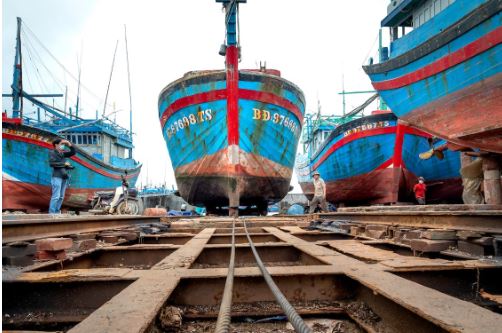
Global supply chains will continue to become efficient as new technologies penetrate the industry. Innovation is the driver of growth especially in the maritime industry where the safe transport of goods across oceans will depend on the integrity of the vessels handling them.
With this in mind, the shipbuilding sector will benefit from the latest manufacturing approaches that will profoundly transform the maritime industry in 2024. It only matters for shipbuilders to identify these trends and apply them in their processes. Below is a list of shipbuilding technologies that will play a pivotal role in the sector this year:
1. Use of AI in the Process
Artificial intelligence is not only useful in the creative economy. Manufacturing industries are already investing in AI tools to aid in the production of goods. On a larger scale, shipbuilding companies are also using AI to aid in ship design for optimal resource savings.
AI can also run simulations reflecting real-world situations such as strong ocean currents and storms to aid builders in coming up with more weather-resilient designs. This would introduce a new generation of vessels built to withstand the elements.
From a safety perspective, AI tools can recommend possible mitigating measures to install in a vessel based on potential hazards. This allows shipbuilders to optimize their concepts for greater workforce safety.
2. Tools for greater sustainability
According to the United Nations Conference on Trade and Development, the maritime industry accounted for more than 2.8% of the world’s total greenhouse gas emissions. The sector has a great potential to reduce its environmental impacts through decarbonization efforts. This would mean ensuring that the production processes have minimal environmental impact without affecting efficiency.
Methods such as friction stir welding consume less energy than conventional welding methods. Concepts for purely solar-powered container ships have also been drafted, but more investments are needed to launch ships that depend on other sustainable fuel sources, including biofuel and green hydrogen.
As decarbonization picks up in the maritime industry, it’s only a matter of time before cargo and passenger vessels begin to lose their reliance on fossil fuels and embrace the more abundant alternative sources around.
3. New organic materials
In the shipbuilding industry, not all materials are meant to withstand harsh ocean conditions. However, this year would see the start of using shipbuilding parts that are not entirely made of steel. Additive manufacturing may not play a role in this since materials for 3D printing ship parts won’t last during long voyages. Shipbuilders are looking towards fiber-reinforced plastic (FRP) as an alternative to steel.
Although it has yet to enter mainstream shipbuilding, this approach to ship design promises lower maintenance costs because FRP is known to be corrosion-resistant. Steel may continue to be an affordable and accessible shipbuilding material at the moment, but composite parts are expected to become more appealing to builders aiming for durability and longevity.
4. Machine learning for maintenance
Regular maintenance is required in intercontinental shipping lines, so it’s a costly endeavor for ship owners to consider. With the use of predictive analytics, ship operators can come up with more accurate timelines for vessel maintenance and monitor the health of facilities onboard.
Using the right machine-learning software, shipbuilders can automate material acquisition and optimize vessel designs. These can also help assess the level of resistance against harsh environmental conditions. Such tools can also analyze fuel consumption based on a vessel’s overall weight and speed. With this, shipbuilders can determine optimal material compositions that cut the number of times vessels are brought back for maintenance and repairs after long voyages.
5. Intuitive design software
The marker for cargo and passenger ships is slowly deviating from conventional designs that cost more to maintain and pose a greater environmental threat. With this in mind, shipbuilders are looking towards design platforms that can help them optimize their plans and come up with economically efficient vessels.
Presently, there is a wide array of 3D modeling tools that offer shipbuilders the ability to develop vessel designs that use fewer materials and are more fuel-efficient. What’s more, these tools provide engineering solutions that align with safety and environmental compliance standards.
From cloud-based tools that can run natural buoyancy simulations to AI-powered design software that generates efficient designs, these new technologies will become more widespread this year as shipbuilders aim to simplify the design process at lesser costs.
Endnote
Innovations such as these are only the tip of the iceberg. There’s more we can expect in 2024, especially as shipbuilders are focusing more closely now than ever on improving supply chains amid rising costs and the threat of climate change.
